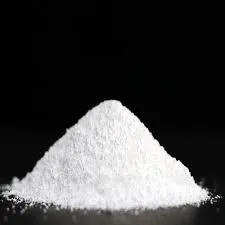Automotive Plastic Additives Enhancing Performance and Durability
In the fast-evolving automotive industry, the use of plastics has become increasingly integrated into vehicle design and manufacturing. The demand for lightweight, durable, and aesthetically pleasing components has led to significant advancements in automotive plastic technology. One of the critical aspects of this development is the incorporation of plastic additives, which bolster the performance, longevity, and sustainability of automotive parts.
The Role of Plastic Additives
Plastic additives are substances added to base polymer materials to enhance certain properties. They play a vital role in improving the mechanical, thermal, and aesthetic qualities of plastics used in vehicles. Common types of additives include plasticizers, stabilizers, fillers, pigments, and flame retardants. Each of these additives serves a distinct purpose, contributing to the overall functionality of automotive plastics.
1. Plasticizers
Plasticizers are commonly used to increase the flexibility and workability of plastics. In automotive applications, where materials must withstand varying temperatures and stress, plasticizers can ensure that components remain pliable and resilient. For example, softened polyvinyl chloride (PVC) is utilized in various car interiors, providing a comfortable, durable surface for upholstery and dashboard materials.
2. Stabilizers
Stabilizers are critical in enhancing the lifespan of automotive plastics, particularly those exposed to harsh environmental conditions such as UV radiation and thermal stress. UV stabilizers protect plastics from degradation caused by sunlight, while thermal stabilizers reduce the risk of heat-induced structural failure. These additives ensure that components like bumpers, exterior cladding, and under-hood parts maintain their integrity over time, regardless of exposure to extreme weather or high temperatures.
3. Fillers
automotive plastic additives

Fillers are materials added to plastic formulations to enhance specific properties, such as strength, weight, and cost efficiency. In automotive applications, fillers like talc, calcium carbonate, and glass fibers are commonly used to reinforce the structural integrity of plastic components. By integrating these fillers, manufacturers can produce lightweight yet high-strength parts that help improve fuel efficiency without compromising safety.
4. Pigments
Color and visual appeal are vital in automotive design, and pigments are essential components in achieving the desired aesthetic. Beyond enhancing appearance, certain pigments can also provide UV protection, thereby contributing to the longevity of exterior plastics. Advanced color formulations can result in a high-gloss finish or matte textures, allowing manufacturers to meet diverse consumer preferences.
5. Flame Retardants
With safety being a top priority in automotive manufacturing, flame retardants are crucial additives that reduce flammability. These additives help prevent fires in case of accidents and are essential for interior components, such as seat upholstery and dashboard elements. The development of halogen-free flame retardants has also become essential, aligning with environmental sustainability goals.
Environmental Considerations
As the automotive industry moves towards sustainability, the focus has also shifted towards the development of environmentally friendly additives. Biodegradable additives and those made from renewable resources are gaining traction, allowing for the production of eco-conscious plastic alternatives. Automakers are increasingly looking to balance performance with sustainability, leading to innovations that reduce environmental impact while maintaining the robust characteristics required for effective automotive use.
Conclusion
The integration of plastic additives in the automotive industry plays a pivotal role in enhancing the performance, durability, and aesthetic appeal of vehicle components. As manufacturers continue to innovate and respond to the growing demands for lightweight and sustainable materials, the importance of these additives will only increase. The dynamic relationship between automotive design and plastic technology promises exciting developments in the years to come, paving the way for smarter, safer, and more efficient vehicles. As the industry moves forward, the critical role of automotive plastic additives will remain a cornerstone in achieving these goals, ensuring that vehicles continue to meet both consumer expectations and environmental standards.

